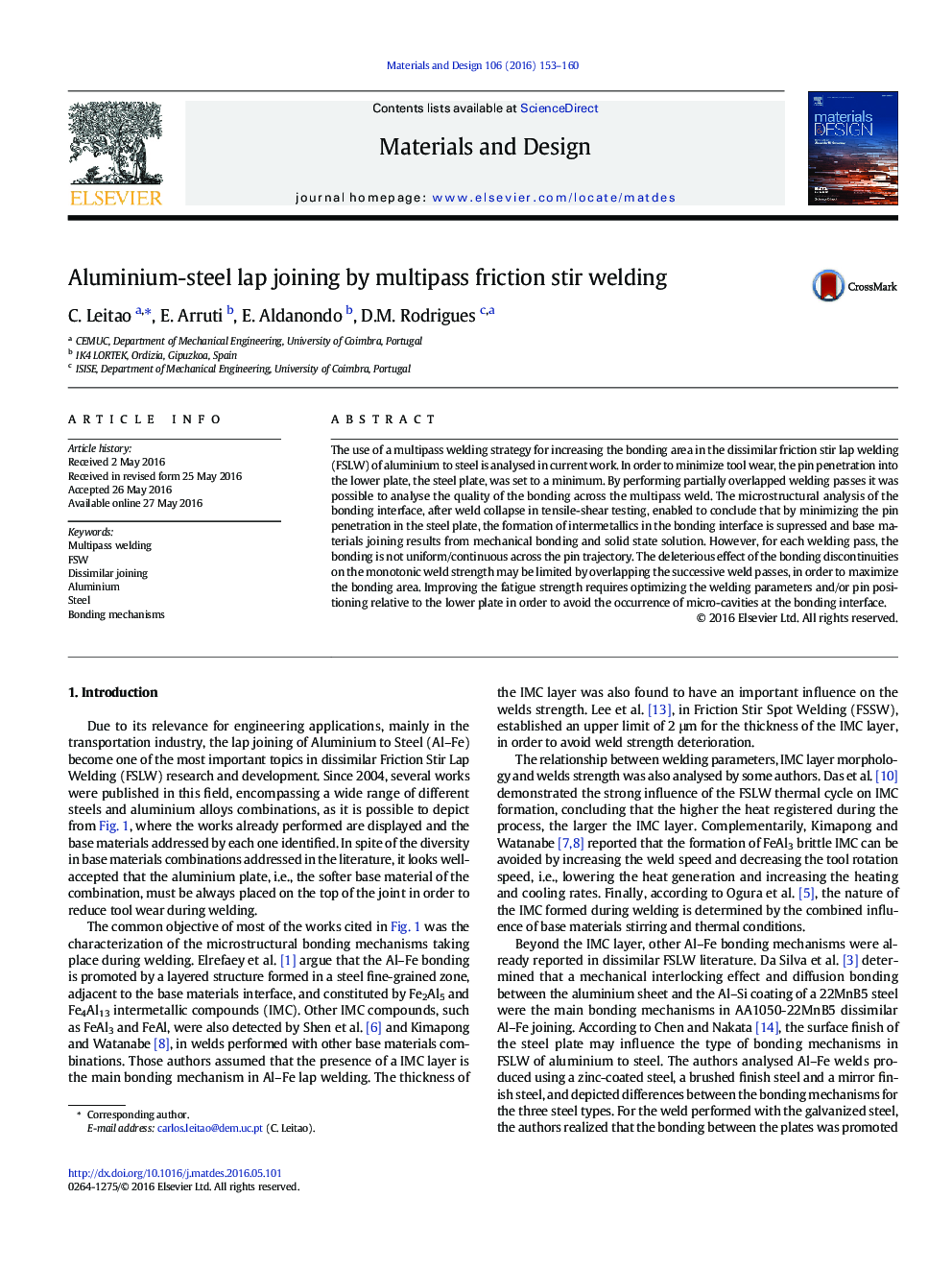| Article ID | Journal | Published Year | Pages | File Type |
|---|---|---|---|---|
| 827875 | Materials & Design | 2016 | 8 Pages |
•Multipass friction stir lap welding of aluminium to steel•Mechanical bonding by a wavy interface and diffusion/solid solution•Interfacial failure in monotonic tensile-shear loading•Small discontinuities work as fatigue crack nucleation sites
The use of a multipass welding strategy for increasing the bonding area in the dissimilar friction stir lap welding (FSLW) of aluminium to steel is analysed in current work. In order to minimize tool wear, the pin penetration into the lower plate, the steel plate, was set to a minimum. By performing partially overlapped welding passes it was possible to analyse the quality of the bonding across the multipass weld. The microstructural analysis of the bonding interface, after weld collapse in tensile-shear testing, enabled to conclude that by minimizing the pin penetration in the steel plate, the formation of intermetallics in the bonding interface is supressed and base materials joining results from mechanical bonding and solid state solution. However, for each welding pass, the bonding is not uniform/continuous across the pin trajectory. The deleterious effect of the bonding discontinuities on the monotonic weld strength may be limited by overlapping the successive weld passes, in order to maximize the bonding area. Improving the fatigue strength requires optimizing the welding parameters and/or pin positioning relative to the lower plate in order to avoid the occurrence of micro-cavities at the bonding interface.
Graphical abstractFigure optionsDownload full-size imageDownload as PowerPoint slide
